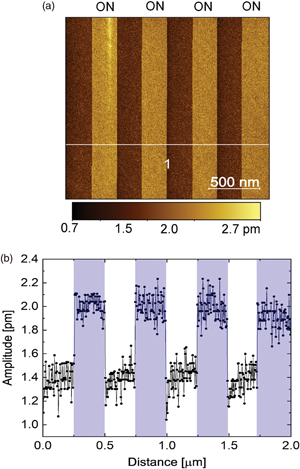No CrossRef data available.
Published online by Cambridge University Press: 26 May 2022

The surging interest in manipulating the polarization of piezo/ferroelectric materials by means of light has driven an increasing number of studies toward their light-polarization interaction. One way to investigate such interaction is by performing piezoresponse force microscopy (PFM) while/after the sample is exposed to light illumination. However, caution must be exercised when analyzing and interpreting the data, as demonstrated in this paper, because sizeable photo-response observed in the PFM amplitude image of the sample is shown to be caused by the electrostatic interaction between the photo-induced surface charge and tip. Through photo-assisted Kelvin probe force microscopy (KPFM), positive surface potential is found to be developed near the sample's surface under 405 nm light illumination, whose effects on the measured PFM signal is revealed by the comparative studies on its amplitude curves that are obtained using PFM spectroscopy mode with/without illumination. This work exemplifies the need for complementary use of KPFM, PFM imaging mode, and PFM spectroscopy mode in order to distinguish real behavior from artifacts.